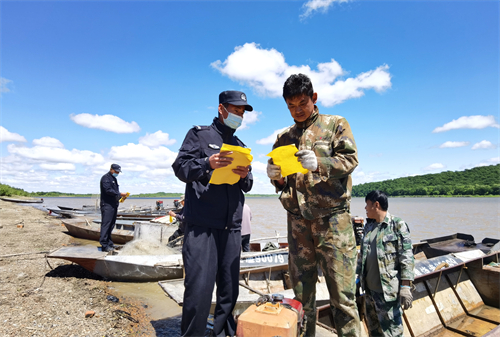Five archeological excavations in our province have been fully launched
Author:Qinghai Pu Law Time:2022.07.27
Qinghai News Network · Damei Qinghai Client News Reporter learned from the Qinghai Provincial Cultural Relics Bureau that our province has fully launched the Tibetan hot water tomb of the Haixi Mongolian Tibetan Autonomous Prefecture, the Shermar Kobu site, and the Taohai Cemetery in Wulan County , 5 active archeological excavations in Tongde County, Tibetan Autonomous Prefecture, Hainan Tibetan Autonomous Prefecture, and Jiangxigou site in Republic County.
This time, the National Cultural Relics Bureau approved the excavation area of 2740 square meters. land.
According to the relevant person in charge of the Provincial Cultural Relics Bureau, in 2022, in order to fully cooperate with the construction project of the Yangqu Hydropower Station of the Yellow River, our province has accelerated the archeological excavation of the flooding area of the Yangqu Hydropower Station Construction Reservoir, and formulated 10 cultural relics of the overwhelming area of Yangqu Hydropower Station. The archeological excavation work plan of the site is planned to complete the excavation area of about 18,000 square meters this year.
At present, the Provincial Institute of Cultural Relics and Archaeological Research Institute and 6 domestic archeological teams including the Shanghai Museum and the Luoyang Archaeological Research Institute have entered the construction of Nanyan along the Yangqu Hydropower Station. Six sites of Yangqu City (Xinghai) have launched a comprehensive archeological excavation work, discovering many ancient relics such as gray pit, pillar holes, and active surface during the period of Zongri culture to Qijia culture.
The Jiangxi Gou site is located in Jiangxigou Town, Republic County, Hainan Prefecture, including two locations: No. 1, Jiangxi Gougou and Jiangxi Gou No. 2. According to the results of the past annual measurement, the site is mainly formed from 15,000 to 6000 years ago, which is of great significance to understand the survival model of the prehistoric hunting and collection of the northeast margin of the Qinghai -Tibet Plateau and the transformation of the hunting economy to the agricultural and animal husbandry economy.
At present, the field excavation work in Jiangxi Gou site is progressing smoothly. The place No. 1 focuses on this excavation area. The excavation area is 15 square meters. The archaeological team has collected more stone products separately, mainly fine stone leaves, fine stone cores, stone chips, stone materials, stone materials, stone materials, and stone materials. , Broken blocks, etc., also collect a small amount of broken bones, pottery slices, etc. The archeological team has been excavated for 10 square meters at the No. 2 place, unearthed several stone products, broken bones, pottery films, etc.
Source: Xihai Metropolis Daily Author: Wu Mengting
Disclaimer: Reproduced this article out of the purpose of passing more information and conducive to the law of law. If there is an error or infringe your legitimate rights and interests, the author is requested to contact the Law of Qinghai with the authority. We will correct and delete it in time. Thank you.
- END -
The Raohe section of the Jiangwu River River in China and Russia enters the ban on the fishing perio

In order to promote the sustainable development of fisheries and protect fishery r...
Signal warning signal of heavy rain in southwestern Guizhou State [Ⅱ/serious]
At 06:58, June 10, 2022, at 06:58, 2022, the southwest of Guizhou was lifted the warning signal.